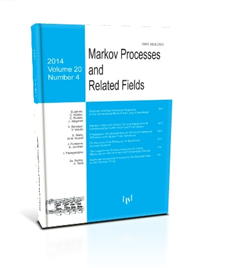On a Response Formula and Its Interpretation
C. Maes, B. Wynants
2010, v.16, Issue 1, 45-58
ABSTRACT
We present a physically inspired generalization of equilibrium response formulae, the fluctuation-dissipation theorem, to Markov jump processes possibly describing interacting particle systems out-of-equilibrium, following the recent work of Baiesi, Maes and Wynants [M. Baiesi, C. Maes and B. Wynants, Fluctuations and response of nonequilibrium states. Phys. Rev. Lett., 2009, v. 103, 010602. Nonequilibrium linear response for Markov dynamics, I. Jump processes and overdamped diffusions. J. Stat. Phys., v. 137, 1094-1116]. Here, the time-dependent perturbation adding a potential $V$ with small amplitude $h_t$ changes the rates $W(x,y)$ for the transition $x\rightarrow y$ into \[ W_t(x,y) = W(x,y) \exp \big\{ h_t \big( bV(y)-aV(x) \big) \big\} \] as first considered by Diezemann [G. Diezemann, Fluctuation-dissipation relations for Markov processes. Phys. Rev. E, 2005, v. 72, 011104] $a$, $b$ are constants. We observe that the linear response relation shows a reciprocity symmetry in the nonequilibrium stationary regime and we interpret the connection with dynamical fluctuation theory.
Keywords: fluctuation response relation,nonequilibrium dynamics
COMMENTS
Please log in or register to leave a comment

